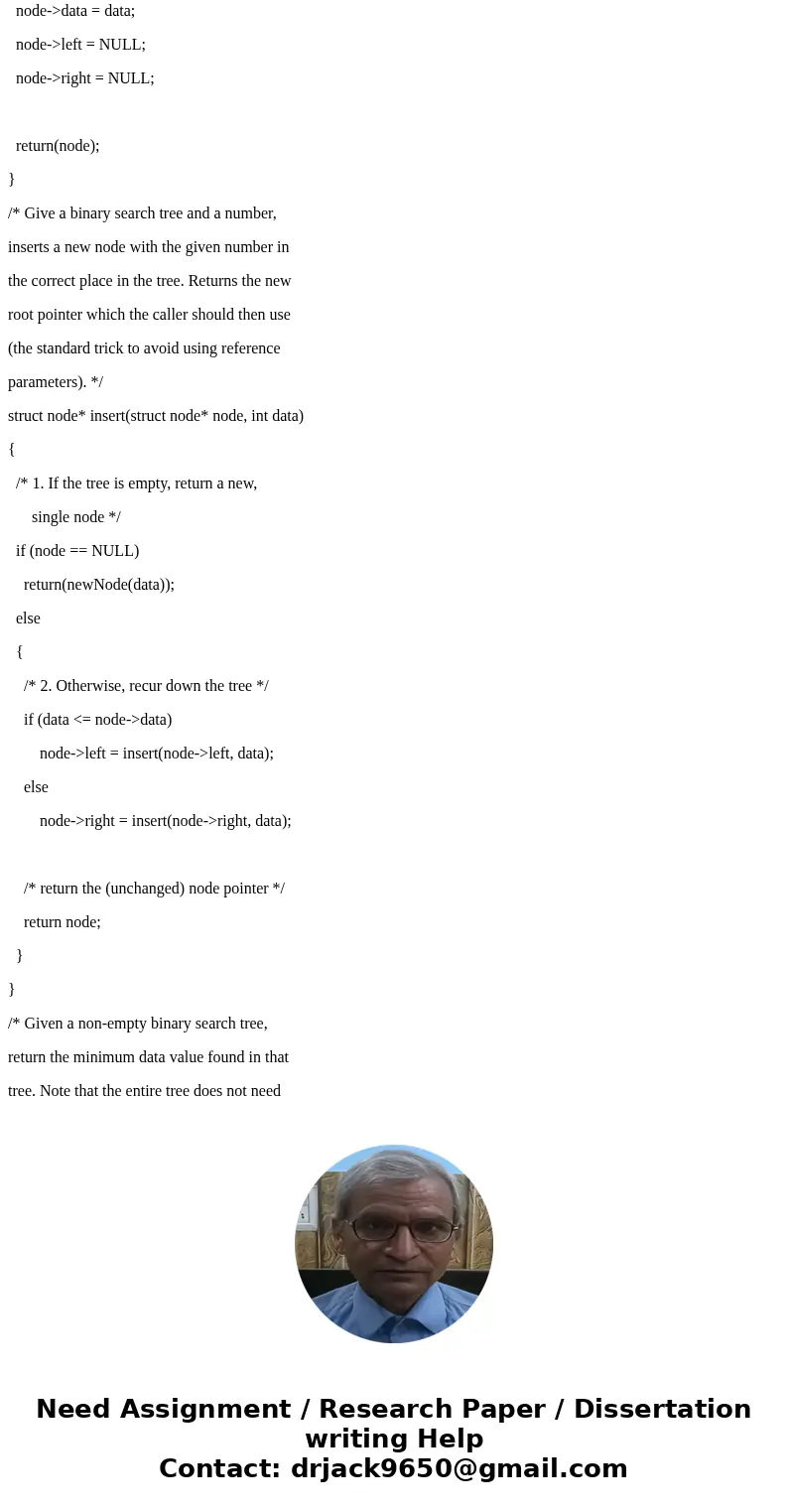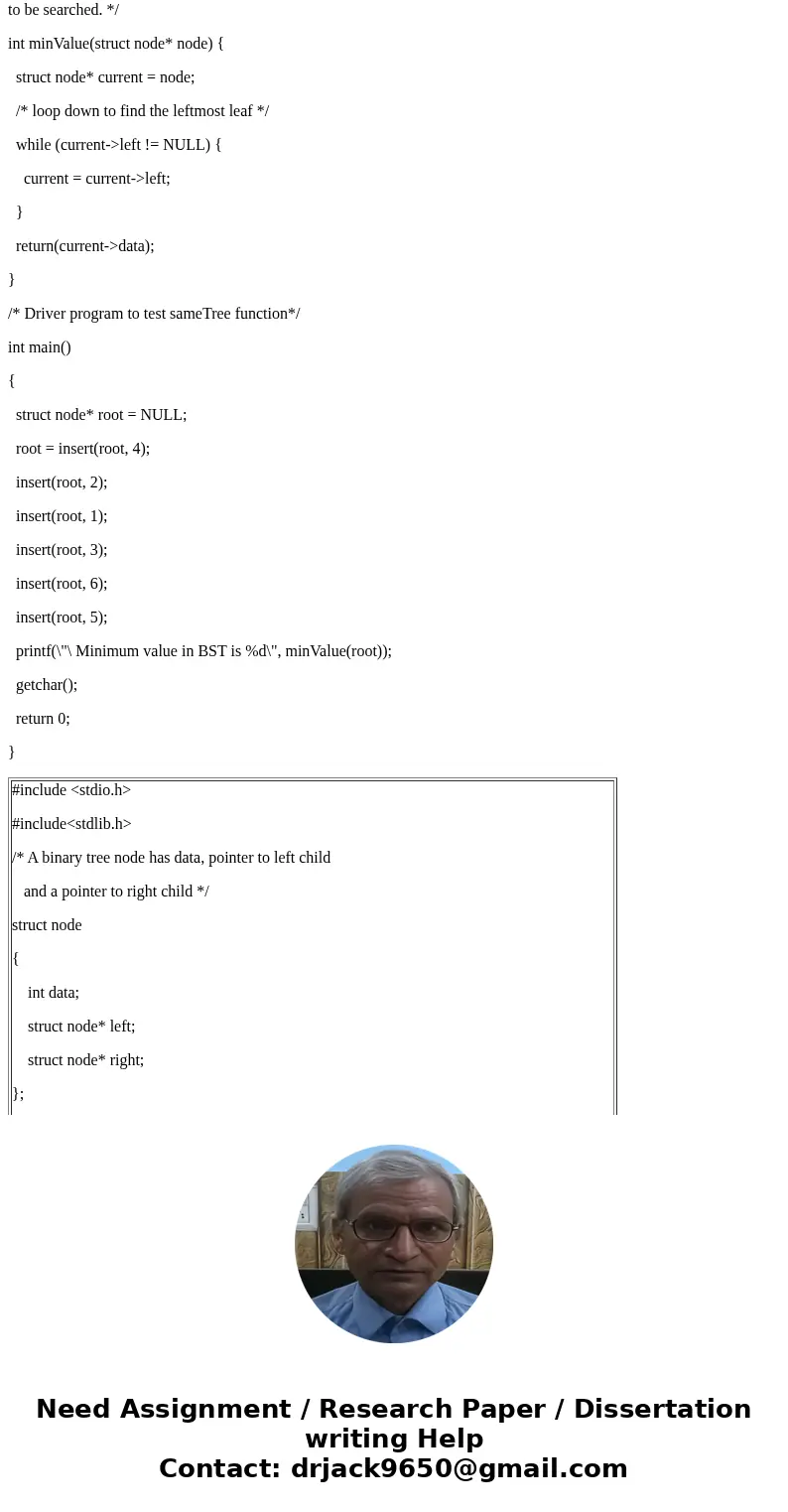Given a newly created Binary Search Tree with the following
Given a newly created Binary Search Tree with the following numerical key input sequence (from left to right): 9, 4, 12, 7, 5, 2, 20, 14, 11, 13, 19, 16, 17, 42, 24
a.) We are asked to add a function Position<E> lowestKey(const Position<E>& v) const to the class SearchTree.
Function prototype: Position<E> lowestKey(const Position<E>& v);
input argument: position of the starting node in the binary search tree to calculate from. For the whole tree this would be the position for the root of the tree.
return value: position of the node having the lowest key value.
i. Describe strategy with reasonings and examples to convince that it will work.
ii. Implement the function using C++ and show the source code listing.
b) We are also asked to add a function Position<E> highestKey(const Position<E>& v) const to the class SearchTree.
Function prototype: Position<E> highestKey(const Position<E>& v) const;
input argument: position of the node in the binary search tree to calculate from. For the whole tree this would be the position for the root of the tree.
return value: position of the node having the highest key value.
i. Describe strategy with reasonings and examples to convince that it will work.
ii. Implement the function using C++ and show the source code listing.
Solution
#include <stdio.h>
#include<stdlib.h>
/* A binary tree node has data, pointer to left child
and a pointer to right child */
struct node
{
int data;
struct node* left;
struct node* right;
};
/* Helper function that allocates a new node
with the given data and NULL left and right
pointers. */
struct node* newNode(int data)
{
struct node* node = (struct node*)
malloc(sizeof(struct node));
node->data = data;
node->left = NULL;
node->right = NULL;
return(node);
}
/* Give a binary search tree and a number,
inserts a new node with the given number in
the correct place in the tree. Returns the new
root pointer which the caller should then use
(the standard trick to avoid using reference
parameters). */
struct node* insert(struct node* node, int data)
{
/* 1. If the tree is empty, return a new,
single node */
if (node == NULL)
return(newNode(data));
else
{
/* 2. Otherwise, recur down the tree */
if (data <= node->data)
node->left = insert(node->left, data);
else
node->right = insert(node->right, data);
/* return the (unchanged) node pointer */
return node;
}
}
/* Given a non-empty binary search tree,
return the minimum data value found in that
tree. Note that the entire tree does not need
to be searched. */
int minValue(struct node* node) {
struct node* current = node;
/* loop down to find the leftmost leaf */
while (current->left != NULL) {
current = current->left;
}
return(current->data);
}
/* Driver program to test sameTree function*/
int main()
{
struct node* root = NULL;
root = insert(root, 4);
insert(root, 2);
insert(root, 1);
insert(root, 3);
insert(root, 6);
insert(root, 5);
printf(\"\ Minimum value in BST is %d\", minValue(root));
getchar();
return 0;
}
| #include <stdio.h> #include<stdlib.h> /* A binary tree node has data, pointer to left child and a pointer to right child */ struct node { int data; struct node* left; struct node* right; }; /* Helper function that allocates a new node with the given data and NULL left and right pointers. */ struct node* newNode(int data) { struct node* node = (struct node*) malloc(sizeof(struct node)); node->data = data; node->left = NULL; node->right = NULL;
return(node); } /* Give a binary search tree and a number, inserts a new node with the given number in the correct place in the tree. Returns the new root pointer which the caller should then use (the standard trick to avoid using reference parameters). */ struct node* insert(struct node* node, int data) { /* 1. If the tree is empty, return a new, single node */ if (node == NULL) return(newNode(data)); else { /* 2. Otherwise, recur down the tree */ if (data <= node->data) node->left = insert(node->left, data); else node->right = insert(node->right, data);
/* return the (unchanged) node pointer */ return node; } } /* Given a non-empty binary search tree, return the minimum data value found in that tree. Note that the entire tree does not need to be searched. */ int minValue(struct node* node) { struct node* current = node; /* loop down to find the leftmost leaf */ while (current->left != NULL) { current = current->left; } return(current->data); } /* Driver program to test sameTree function*/ int main() { struct node* root = NULL; root = insert(root, 4); insert(root, 2); insert(root, 1); insert(root, 3); insert(root, 6); insert(root, 5); printf(\"\ Minimum value in BST is %d\", minValue(root)); getchar(); return 0; } |





 Homework Sourse
Homework Sourse